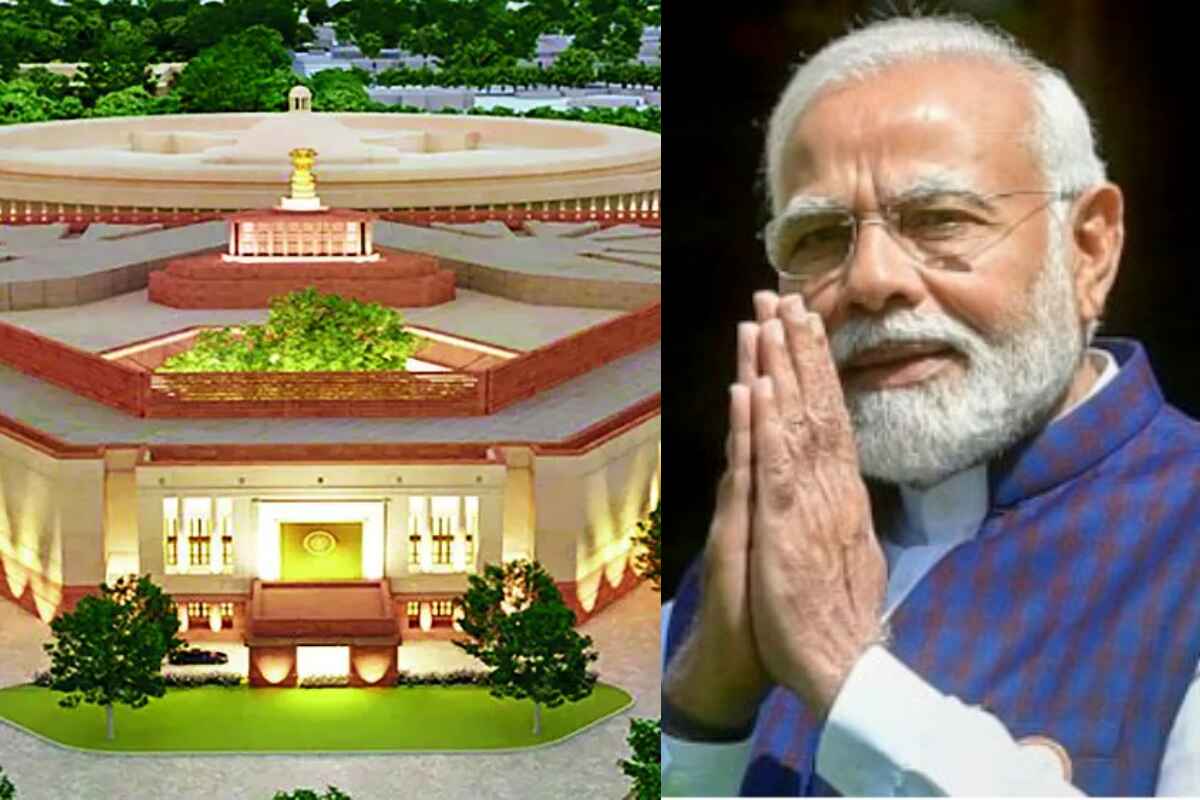
The world’s biggest democracy is about to get a modern symbol as PM Narendra Modi is scheduled to lead the nation in the inauguration of the country’s new Parliament building. The ceremony will commence with a Hindu yagna and will be attended by the Rajya Sabha Deputy Speaker, cabinet ministers, and other esteemed guests.
During the morning session of the ceremony, PM Modi will place the historic Sengol—a 5-feet long golden sceptre—near the Speaker’s new chair amidst traditional rituals. The afternoon session will commence with the national anthem, followed by messages from President Draupadi Murmu, Vice-President Jagdeep Dhankar, and Rajya Sabha Deputy Speaker Harivansh. Lok Sabha Speaker Om Birla will then address the August gathering.
Mallikarjuna Kharge, the opposition leader in the Rajya Sabha, is also among the list of speakers. However, his chances of attending are rather slim considering the Congress is one of the 20 parties boycotting the event. These parties are unhappy that the Prime Minister, rather than the President, will inaugurate the new building.
While one can debate the validity of their objections, the boycott appears to be an overreaction. Opposition parties have missed an opportunity to join the nation in celebrating a national milestone. Their actions only project an image of a nation divided within itself.
Political leaders across party lines attended PM Modi’s event in Sydney, including the current Prime Minister Anthony Albanese and his predecessor. Prime Minister Modi highlighted this consensus in Australian politics upon arriving at Palam airport. He must be hoping to send a signal to India’s opposition. After all, the new Parliament represents the spirit of 1.4 billion Indians, not just the Prime Minister.
Over the past nine years, the Modi government has endeavored to give a fresh identity to this same spirit. It has wholeheartedly embraced India’s ideals, vows, and ambitions, while liberating our symbols from mental bondage. This is a part of the journey to achieve complete freedom for the “Mann and Manas”—the mind and mankind. The new temple of democracy, situated at the heart of the country, represents an important milestone on this path. In contrast, when Lord Irwin inaugurated the current Parliament building in 1927, it was just another colonial structure with no reflection of Indian ethos. The new building will be completely free from any colonial influence.
In fact, the Modi government has made efforts to step out of the colonial shadow in various aspects. Delhi’s iconic Rajpath, once a regal route, has been renamed Kartavya Path, reminding citizens of their national duties. The Prime Minister’s residential address has also changed from Race Course Road to Lok Kalyan (People’s Welfare) Road. The statue of King George at India Gate has been replaced with a memorial for Netaji Subhash Chandra Bose. The Indian Navy’s flag has also been Indianized.
A similar transformation can be observed in administration. The government has abolished or amended over 1,500 British-era laws. The immortal song “e mere vatan ke logo” now replaces the colonial song “abide with me” during the Republic Day’s concluding Beating the Retreat ceremony. This annual event now resounds with the melodies of Indian instruments like the Sitar, Tabla, and Santoor. The Modi government has even done away with the British tradition of a separate annual rail budget and changed its presentation date.
Now, we stand among nations that have constructed their own Parliaments after gaining independence from imperial powers. It is a matter of pride for all Indians. The Parliament is where the nation’s destiny takes shape. The current building has witnessed historic debates and decisions over the past 75 years, made possible by the diligent efforts of the individuals who work behind the scenes to keep the place running. However, the existing building has become increasingly cramped and unable to meet the changing needs of Parliamentarians and staff. Visitors to the building can attest to this fact. Political parties and employees vie for office spaces. The building’s roofs and walls have leakages, air conditioners often malfunction, and the sound system is outdated. Furthermore, the building would not be able to accommodate all lawmakers after 2026 when delimitation of Parliamentary constituencies is expected to occur, potentially increasing the total number of Lok Sabha seats from the current 543 to around 800. Recognizing the necessity of a new Parliament complex, even the Congress party supported the idea during former Speaker Meira Kumar’s tenure from 2009 to 2014.
Prime Minister Modi deserves credit for taking the initiative in this matter and completing the project in a record time of 30 months. The new state-of-the-art complex draws inspiration from ancient Indian symbols while incorporating modern amenities. The new Lok Sabha hall is designed like a peacock and will house 888 seats, while the Rajya Sabha hall is themed around the national flower, the Lotus, with a capacity for 384 MPs. The new building is expected to remain functional for at least the next 100 years. PM Narendra Modi expressed hope that the new Parliament will bear witness to our journey towards self-reliance, just as its predecessor structure witnessed India’s embarkation on a new path after independence. I am confident that every Indian shares this hope.



















